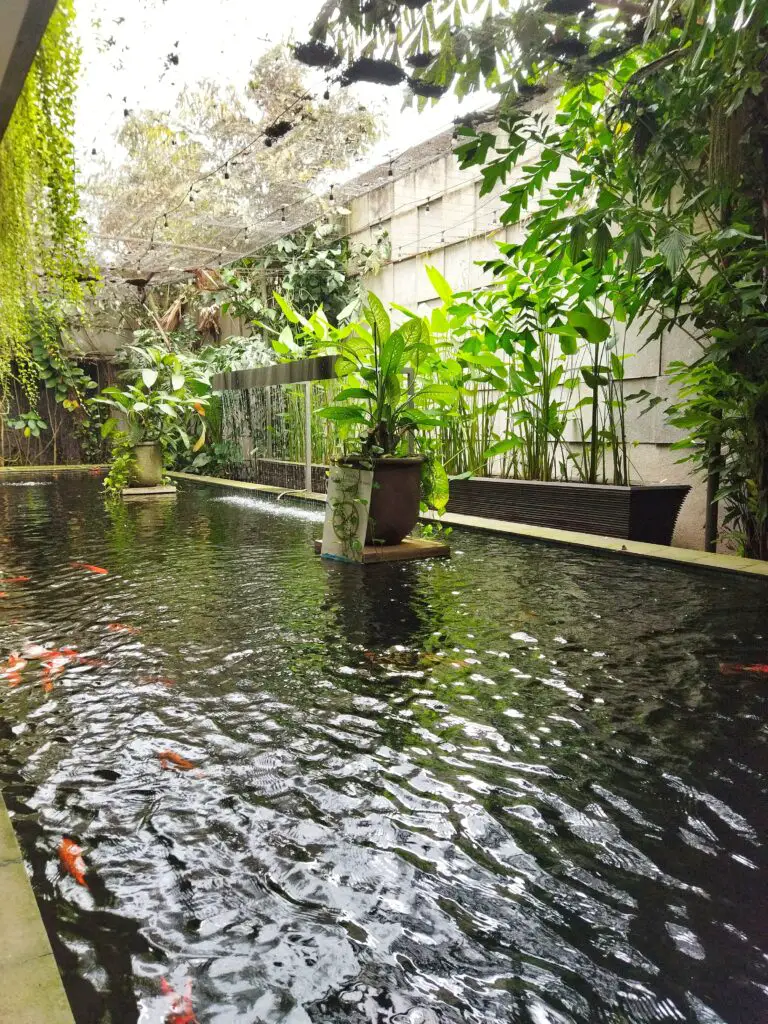
Sitting next to a pond with water trickling down a waterfall while the fish slowly glide between the plants is a beautiful experience. It is a scene that has captured the imagination of romantic novelists, songwriters, and poets through the ages and is unique to ponds that have pumped water.
Pond pumps consist of a motor and impeller, which spin at high speeds and create a centrifugal force that pumps the water from the inlet pipe and back into the pond through the outlets. Choosing the most suitable pump for your pond is essential and will ensure your fish stay healthy.
Pond pumps are designed for many different purposes, including ornate fountains to push water through a feature such as a waterfall or, more simply, to oxygenate the water and ensure the fish stay healthy.
Pro Tip: If you’re tired of wasting money and making costly mistakes on the koi-keeping hobby or are thinking about buying koi fish but don’t know where to start, I strongly suggest you check out this ebook. I recently read this ebook, and it contains SO much useful information, such as:
- 3 proven steps to identify koi fish diseases
- WARNING: 3 things you should NEVER do when it comes to caring for koi
- When to seek professional help when it comes to looking after your koi
How Pond Pumps Work
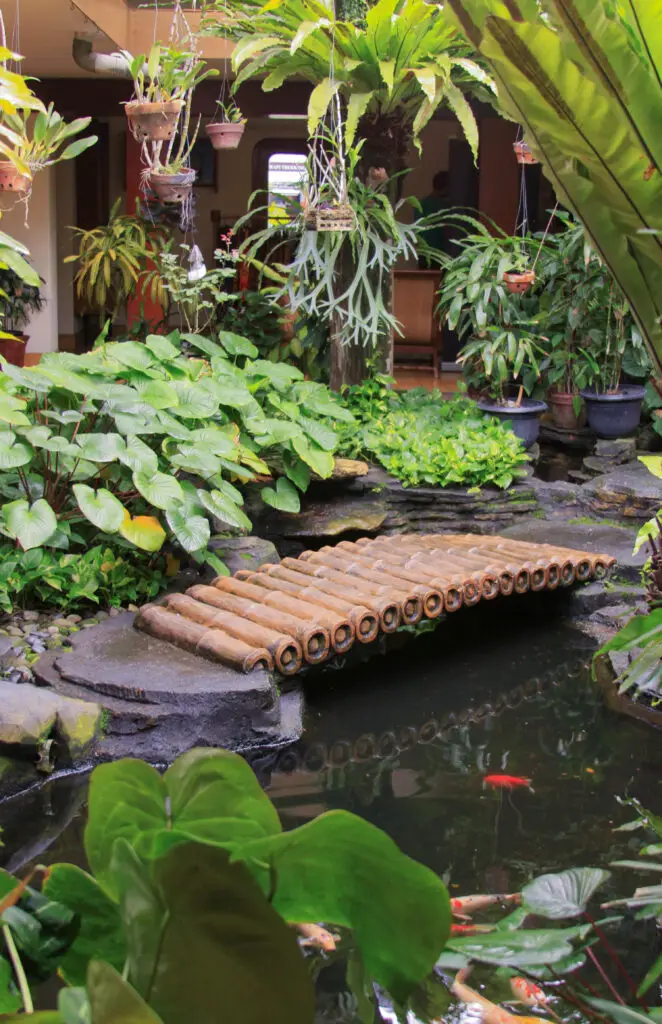
Whether the pond pump is a submersible or externally positioned model, the process used by each one is the same.
The pumps consist of a waterproof casing, a motor, and an impeller (a rotating component that pumps water outward).
Shop now for Pond, Fountain & Waterfall Supplies at GraystoneCreations.com
The impeller is fitted with veins that run very close to the inside of the pipe. The impellor veins force the water through the casing, and the centrifugal force created by the spinning action pushes the water through a pipe positioned at 900 to the impeller and back into the pond.
The volume of water and the speed with which it is moved depends on
- The motors power.
- The size and design efficiency of the impeller.
- The diameter of the pipes.
The bigger the impeller (and casing design), the more water will move.
The larger the impeller, then the higher the power rating of the motor required.
The relationship between the size of the impeller and the motor is not always proportional because the efficiency of the casing (and, therefore, fluid flow) and the advances in impeller design have made it possible to use smaller motors to achieve the same flow rates.
Also, See
How Many Hours A Day Should I Run My Pond Pump?
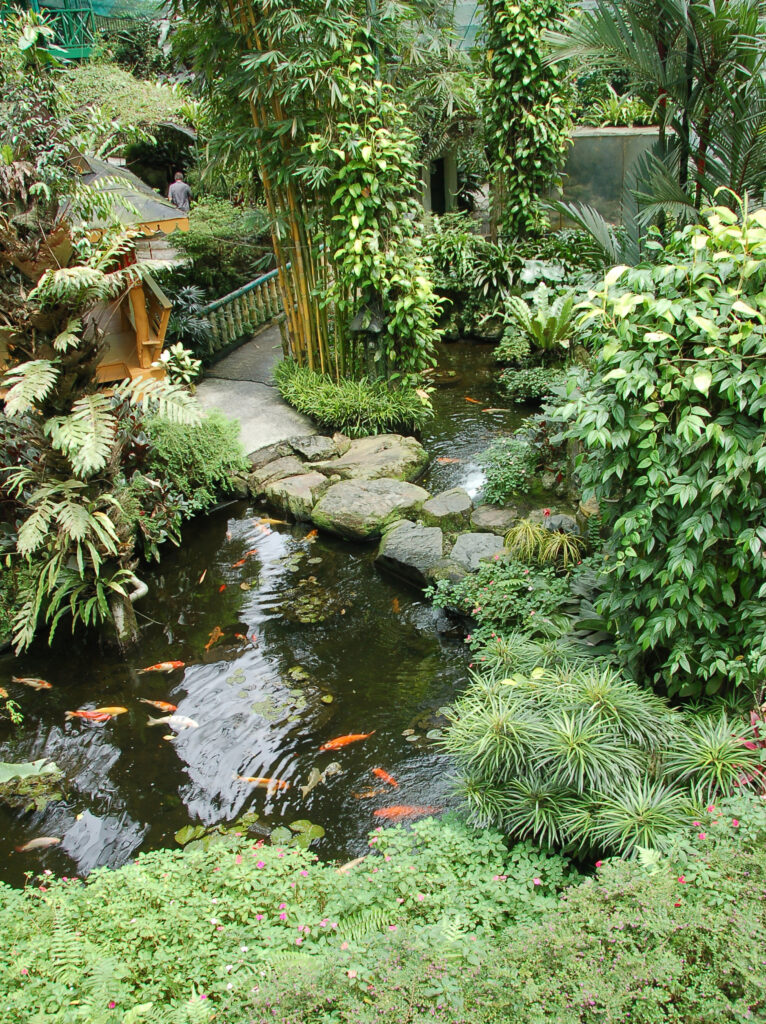
If your pond contains fish, particularly Koi, the pond pump should run continuously 24 hours a day for every day of the week.
While this benefits the pond by causing the water to move and, therefore, not stagnate, the primary benefit for the fish is that it oxygenates the water.
Although you may believe that having pond plants in the water creates sufficient oxygen for the fish(through photosynthesis), they only produce oxygen when it is sunny.
Simultaneously with photosynthesis, a reaction called respiration occurs. This reaction causes the plant to consume sugar and oxygen, generating energy.
During the day, photosynthesis produces more oxygen than is required and releases this. At night the photosynthesis stops, and there is net oxygen consumption.
A further factor is that the amount of oxygen created by such pond plants is generally relatively low compared to the additional oxygen produced by splashing and moving the water via a pump.
Different Types Of Pond Pumps
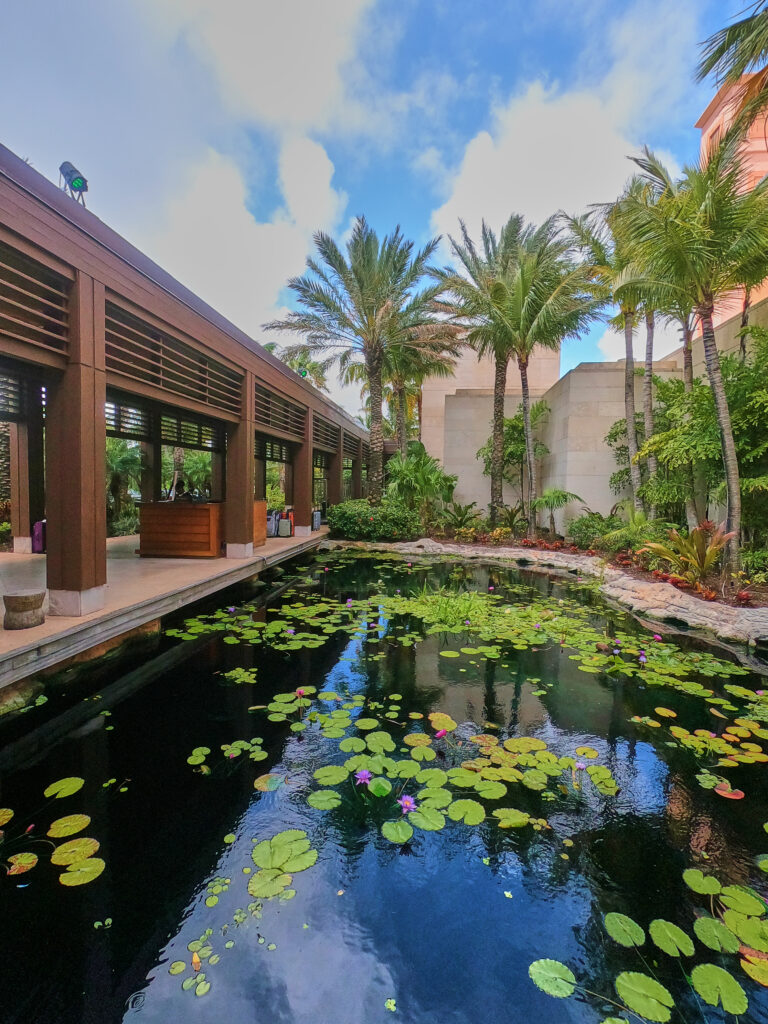
The two primary categories of pond pumps are submersible and above-ground (external) pumps.
Above The Ground (External Pumps)
As the name implies, external pumps are installed outside of the pond, and an input pipe from the pond and an output pipe to the pond control the flow of liquid.
The Pros Of An External Pond Pump
There are several advantages of an external pond pump, including.
- A water skimmer can be positioned between the pond and its outlet, enabling the collection of loose debris, such as leaves and insects.
- You can install a filtration system leading from the external pump in the piping system.
- Higher-power external pumps are available more than submersible pumps, making them more suitable for large ponds.
- External Pumps take up no space in a pond.
- External pumps are more accessible for maintenance purposes.
The Cons Of An External Pump
The cons of an external pump are
- If air gets into the system, you must prime the external pump; otherwise, it will overheat.
- As the pump is generally installed above the pond’s surface, you must fit a non-return valve to stop the water from returning into the pond when it is not running.
Submersible Pumps
These pumps are fully submerged in the pond.
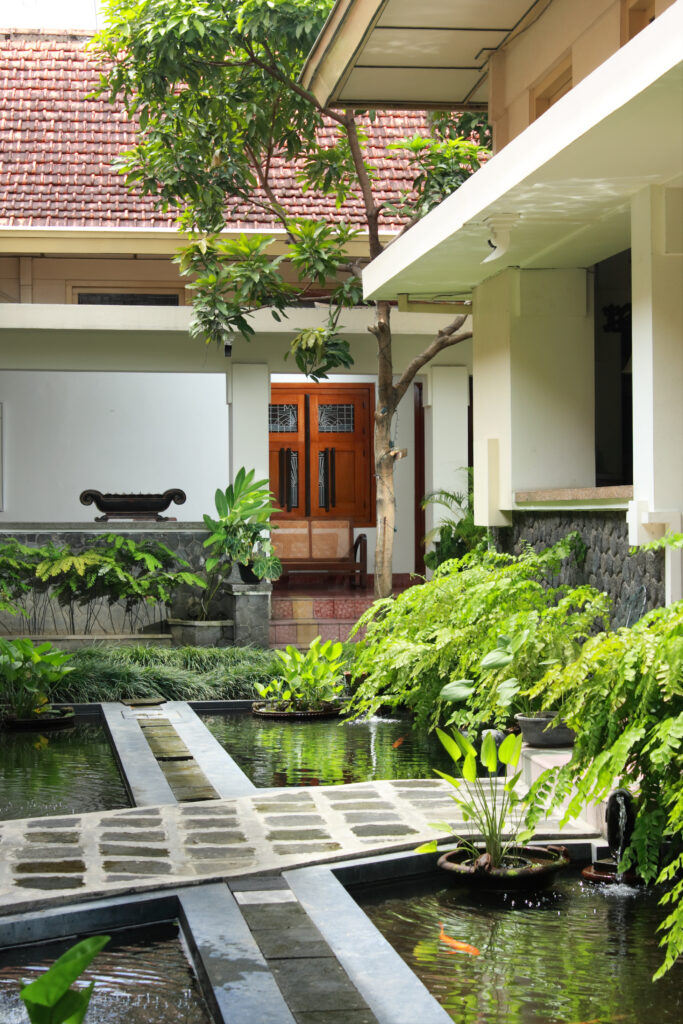
The Pros Of Submersible Pumps
Submersible pumps have several positive features, making them a viable option for pond owners.
- Submersible pumps can be set anywhere with sufficient space on the pond floor.
- Submersible pumps can be lowered into the pond, plugged in, and switched on.
- They tend to be quieter than external pumps.
- The pump is always primed.
The Cons Of Submersible Pumps
The cons of submersible pumps are.
- They take up more space than external pumps.
- Although they can be concealed, this is not something that needs to be done with external pumps.
- Although external pumps can incorporate a skimmer, it takes more piping and affects the aesthetics of the pond.
There are several specific applications which pond pumps are designed for.
Filter Pond Pumps
Filter pond pumps are the most commonly used system. They are generally submersible pumps with a simple filtration system included in their construction.
Most makes are reliable, and even the lower-cost models feature impressive warranty periods.
Fountain Pond Pumps
Fountain pumps are submersible units with long stems that reach up through the pond’s surface.
The outlet is designed to produce a decorative water display.
Fountain Pond Pump from Amazon.
High-Pressure Pond Pumps
As the name implies, high-pressure pond pumps provide a greater flow of water and are ideal for pumping water over a waterfall or other feature which needs a strong flow rate.
High-Pressure Pond Pump from Amazon.
What Size Pond Pump?
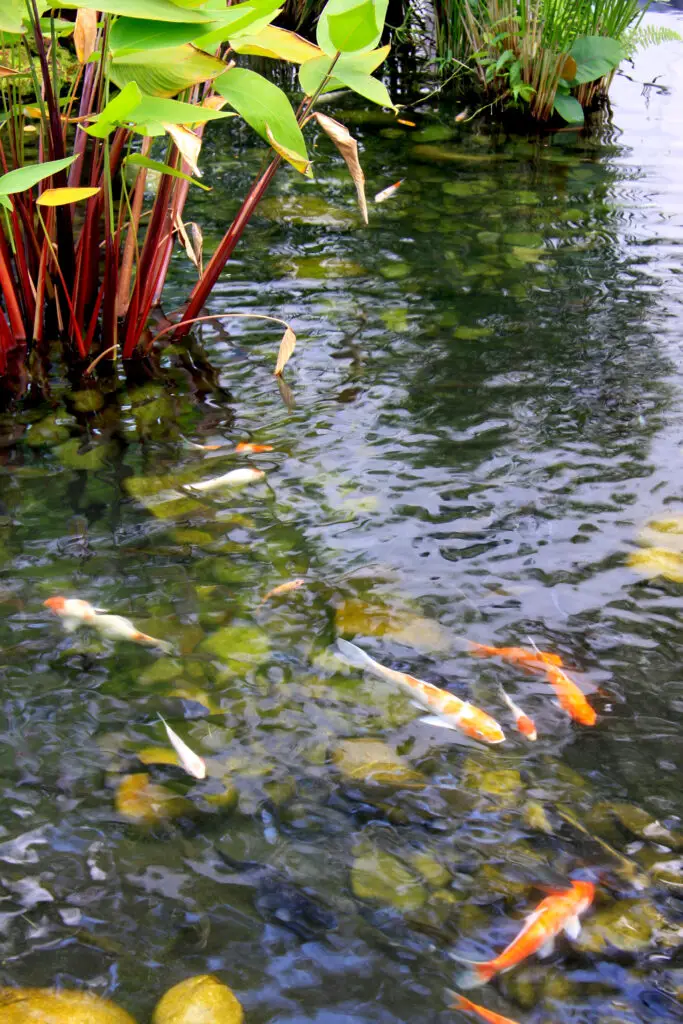

For proper biological filtration and ensuring the water is sufficiently oxygenated, the pump should be capable of turning the entire water volume of your pond every hour and no less than every two hours.
As modern pumps become more efficient, horsepower as the primary indicator is not always accurate. The flow rate is best measured as gallons per hour (GPH ).
You need to know the following measurements.
Capacity Of The Pool
You calculate your pond’s water capacity.
The formula to calculate the capacity is Length x width x average depth x 7.5 = volume (in gallons)
An example of how this works is.
Length – 15 feet
Width – 10 feet
Average depth – 4 feet
The formula is, therefore 15*10*4*7.5 = 4,500 gallons
Without any water features, the ideal pump would have a rating of 4,500 GPH.
The Head Pressure
If you have a water feature or waterfall, you must consider the following.
- The width of the water feature, for example, how wide the lip of a waterfall is.
- The horizontal distance from the pool pump to the water feature
- The height of the water feature from the pond surface.
Every ten horizontal inches the water travels in a pipe is assigned a Lift factor of 1. For example, if the pump is thirty inches away from the feature, the element would be 3 Lift (30/10=3).
For every inch of height, a factor 1 lift is assigned. If the height is 30 inches high, the lift factor would be 30. (30/1=3).
For every inch width of the waterfall lip, multiply by 100 GPH. Therefore, a 30-inch wide lip would be 3,000 (30*100=3,000).
Add all of the “Lift” numbers together, which results in.
- Horizontal = 3 LIFT
- Height = 30 LIFT
- Waterfall Lip = 3,000 (GPH)
Adding the horizontal and vertical lift factors equals 33 (3+30=33).
Pump manufacturers provide a performance chart showing the GPH the unit will pump at specific LIFT values.
Putting these numbers together, you will need a pump that can pump 3,000 (GOH) at a LIFT of 30. Depending on the manufacturer, often state the lift in feet (an example is “Lift extends up to 14.8 ft/4.5 m”).
Conclusion
Although you can use moving water for decorative effect, pond pumps are essential to providing life, giving oxygen to them if your pond has fish. Pond pumps work by a motor spinning an impeller which uses centrifugal force to pump the water from the inlet port and back to the pond through the outlet port.
As technology advances, pond pumps become more efficient and durable, with life expectancy increasing.
References
https://www.doityourself.com/stry/how-does-a-garden-pond-pump-work
Related Blog Posts

